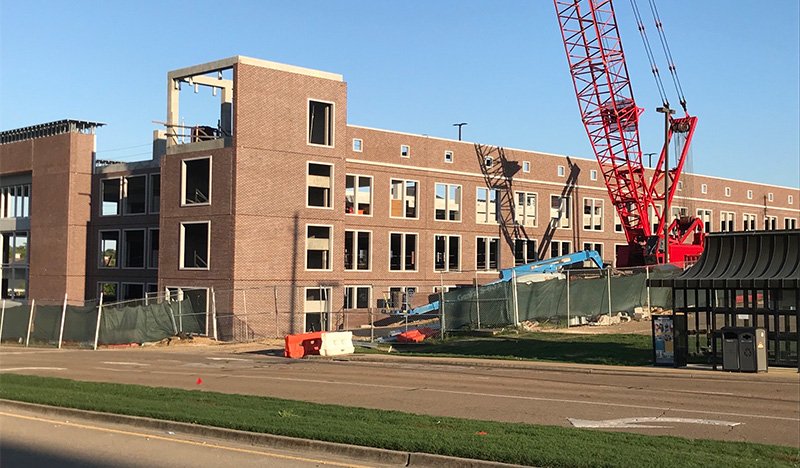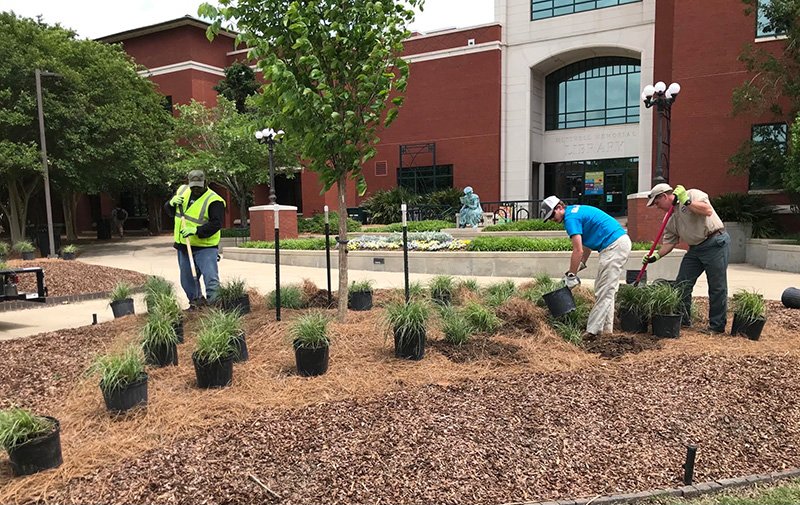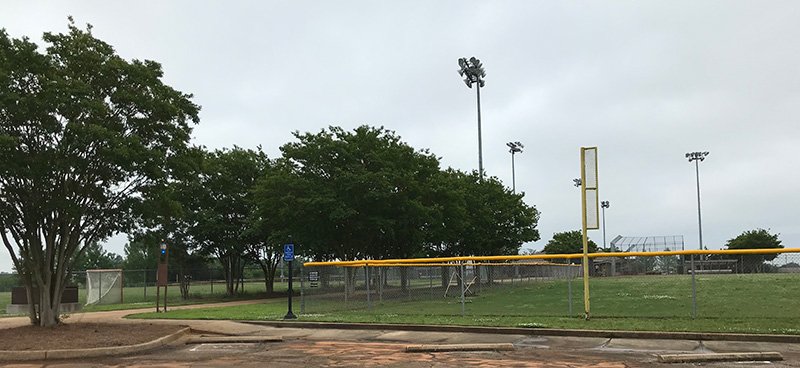Landscaping IS Infrastructure
Infrastructure is a hot topic in our country right now. While it seems to me many different voices agree we should be investing in infrastructure, there seems to be significant differences over how much we should invest. Perhaps even more importantly, there are differences over what even defines infrastructure. While most agree roads and pipes qualify, past that agreement ends. For those of us in the Green Industry, the components of our work are rarely considered infrastructure. Not only is this misguided, but I also think it is seriously short sighted so far as defining infrastructure. To explain myself I want to put forth my opinion as to a commonsense definition of infrastructure and justify why investment the green industry is wise infrastructure expenditure.

Durable
The first aspect that is common to all infrastructure is durability. Infrastructure should reflect a long-term investment thereby providing long-term benefits and utility. Water pipes and roads normally fit this bill, but their durability varies. Usually there is also some correlation between level of funding and durability, but not always. In the landscape industry a project I suggest should logically be considered infrastructure is tree plantings. Landscape trees, even in harsh environments (where incidentally they provide the most benefit) can last many decades, and maybe up to a century. In addition, in contrast to buildings and pipes, trees increase in value and benefit. Most manmade structures require ever increasing maintenance and renovation to keep them suitable. Yes, there is a maintenance cost to trees, but early low-cost maintenance interventions can decrease the necessity for later high-cost maintenance. This positive relationship between initial investment and low long-term cost coupled with diverse long term benefit means trees are an infrastructure winner.

Serves a Larger Purpose – Multi Beneficial
Another hallmark of good infrastructure is that you get more than just the project you build. With transportation infrastructure (roads, rails, runways, etc.) benefits are achieved beyond getting people or things from one place to another (development, economic growth, liveability). With landscaping projects, you can multiply benefits from what seems to be a single facet project. Enhancing or expanding green space can help provide many benefits. Plants provide multiple environmental advantages such as helping mitigate pollution, decrease stormwater runoff, provide cooling in cities, and sequester carbon. Plants and landscaping also improve the livability of an area through aesthetics, providing opportunities for recreation, supporting healthy living, and creating sense of wellbeing. In the education realm (education is infrastructure of the mind) landscaping can improve satisfaction with a school, and even increase test scores and retention. Investment in landscaping infrastructure can enhance these important commercial and social outcomes.
Foundational/Primary
Another characteristic common to infrastructure is a foundational attribute. This is to say it should be in place before other phases of a project or is supportive of subsequent results of the project. For community development to take place, roads and utilities must first be in place. But I suggest schools, grocery stores and recreation must be in place also. What workers will want to work in a job where there is only the job? Green infrastructure enhances business very well. By building public parks, sports complexes, greenway trails, and maybe even golf courses, a municipality or business demonstrates a commitment to an area and its citizens (employees). At a university the green space strongly supports residential students and the greater school community alike. It can also provide the livability that will attract and retain students, faculty, and staff.
One more important consideration is the order in which green infrastructure should be installed. Waiting until later phases of development will add additional cost. Delays, disruption, and redirection of resources may all occur when infrastructure is performed as an add-on or renovation. These costs are avoided when green infrastructure is installed in the proper construction sequence or during early construction. All infrastructure should save resources in order to maximize benefit.

Getting It Done
Defining infrastructure is hard enough let alone implementing an infrastructure project. This blog is not meant to be an authoritative guide but simply a commonsense discussion of what infrastructure is at the street (or grass) level. I believe our country and communities need infrastructure investment. What the specific implementation will look like will be up to decision and policy makers above my pay grade. My writing this is to hope that those same people will look to the green industry, in all its guises, and determine that landscaping is infrastructure too. They should also enthusiastically demonstrate investing in landscaping infrastructure is smart policy.


0 Comments
Recommended Comments
There are no comments to display.